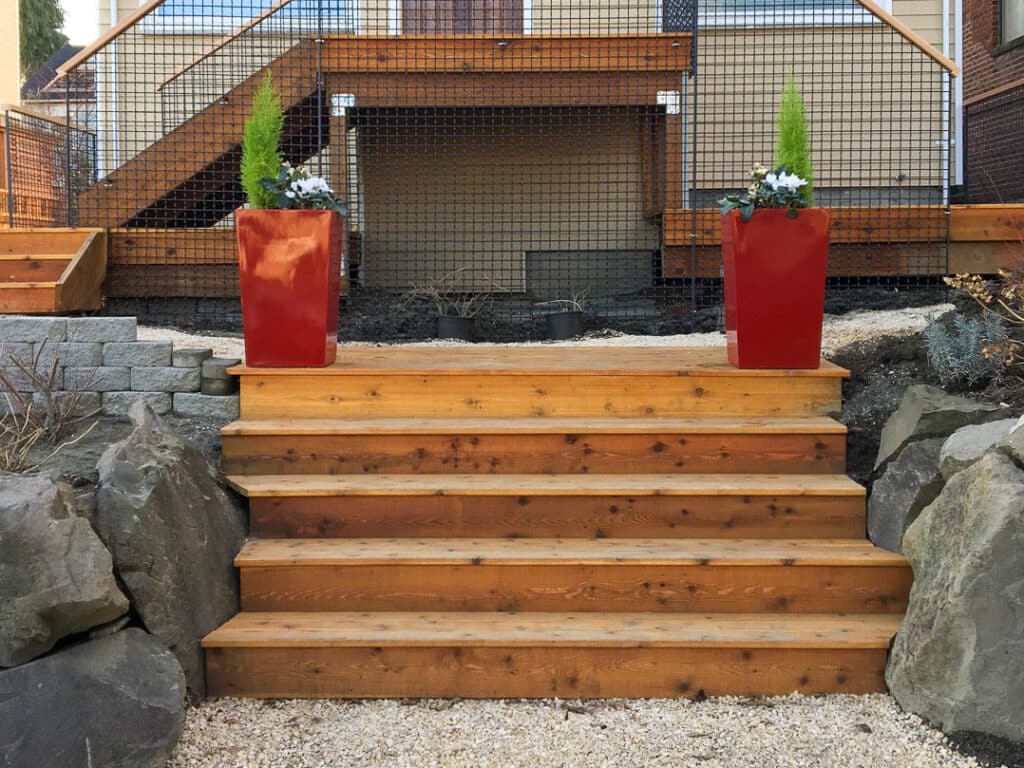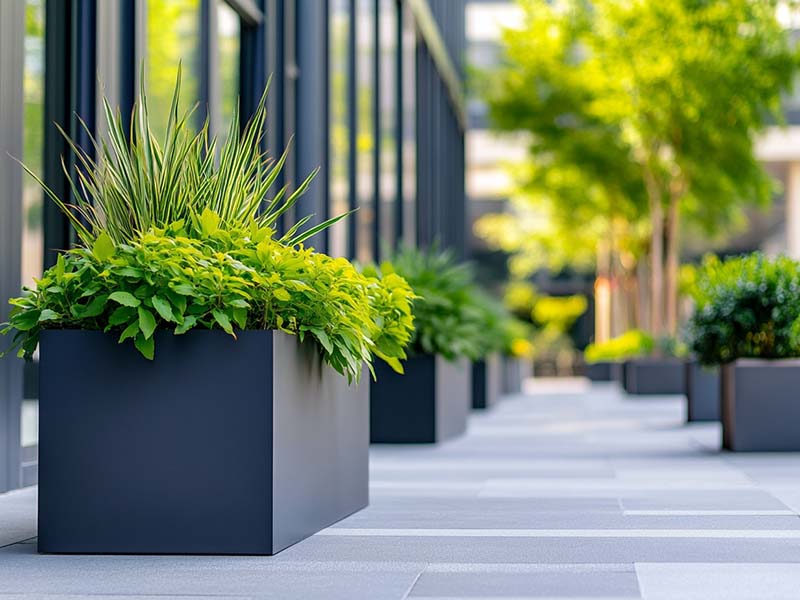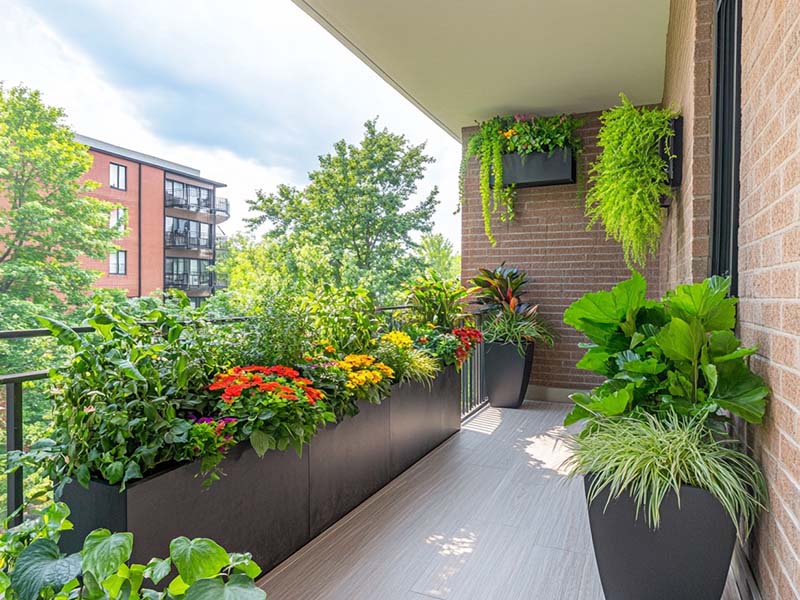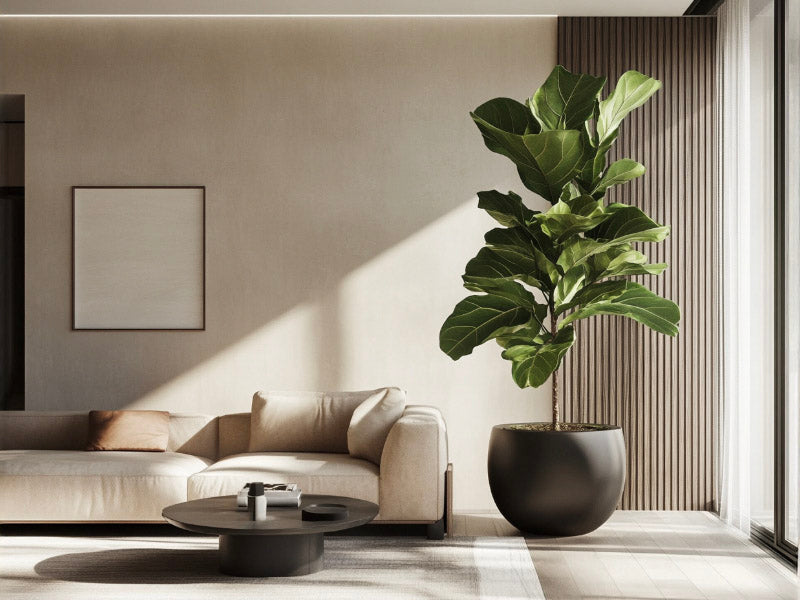See more in our Container Garden series
When you first hear the term 'gravel garden', what comes to mind? For many, the combination of the words sound like a mishmash. Gravel elicits a grey, rocky image whereas the notion of a garden evokes anything from the beautiful lushness of a courtyard garden to tranquil flower beds in an outdoor space. But the two together? Impossible! The fact of the matter is, while yes, the term gravel garden might sound like a typo, it is in fact a great way to introduce a unique look and feel to any landscape. That's why this article will focus on a few great gravel garden ideas with pots so you can get the best of both worlds!
As stated, this article will take a deep dive into various gravel garden ideas. However, before getting into that, we'll focus on explaining a few components that will better your understanding of the subject. For one, we'll outline what exactly a gravel garden is. Afterwards, we'll take a look at several advantages and disadvantages of gravel gardens along with some of the best plant options for these areas. Once that's taken care of, we'll get into the fun part--Our favorite gravel garden ideas!
Before we start, have a glimpse at our supreme collection of outdoor planters that will enhance your effortlessly.
What's A Gravel Garden?
As stated, it's crucial to clearly define a gravel garden before we can really start exploring all the other components of this type of landscaping. So, what is a gravel garden?
Though seemingly self-contradictory, it's possible to come up with a definition simply by putting the two individual terms together. A gravel garden then is a garden where plants grow out from a ground covered by gravel, as opposed to in spite of it.
While at first glance this might confuse more than clarify, really, what you're doing is blending hardscaping (landscaping with non-living elements) with landscaping (landscaping with living elements).
The combination of the two styles are what make gravel gardening more and more popular. Gardeners are able to introduce extra visual interest with their gardens that otherwise would've been run-of-the-mill and similar to all the many gardens one sees nowadays.
Now you know what a gravel garden is, we'll follow up with a few advantages and disadvantages of this sort of outdoor space. These will allow you to make a constructive decision on whether you want to try them out yourself!
How about large planters in a country garden? Check out our 5 Favorite Large Planter Ideas!
Are Gravel Gardens Worth It?
Advantages
- Low maintenance: Perhaps the greatest advantage of gravel gardens are the fact of how low-maintenance they are. They don't require much in the form of regular watering, mowing or fertilizing. Instead, once established, a gravel garden can be left to grow naturally without much intervention. According to Martha Stewart, a gravel garden will end up requiring 80% less maintenance than a typical perennial garden!
- Good drainage: Gravel is an excellent material for drainage, which is essential for healthy plant growth. Drainage prevents water from pooling around the roots of plants, which can cause root rot and other diseases.
- Stylish: Gravel gardens can be very attractive, thanks to the wide range of different textures and colors available. They can also be used to create interesting patterns and designs such as a zen garden or country garden, which introduce unique landscape opportunities to a property.
- Drought-tolerant: Ideal for those living in hotter, drier climates, a gravel garden is a great solution because it is extremely drought-tolerant. This means it doesn't need as much water to thrive so you can still pot plants you like!
- Good for wildlife: One of the lesser-known benefits of a gravel garden is the fact that it's a haven for wildlife, providing a habitat for a range of insects, birds, and other small creatures to live in.
Check out these Square Planter Ideas for a simple way to start using plant pots
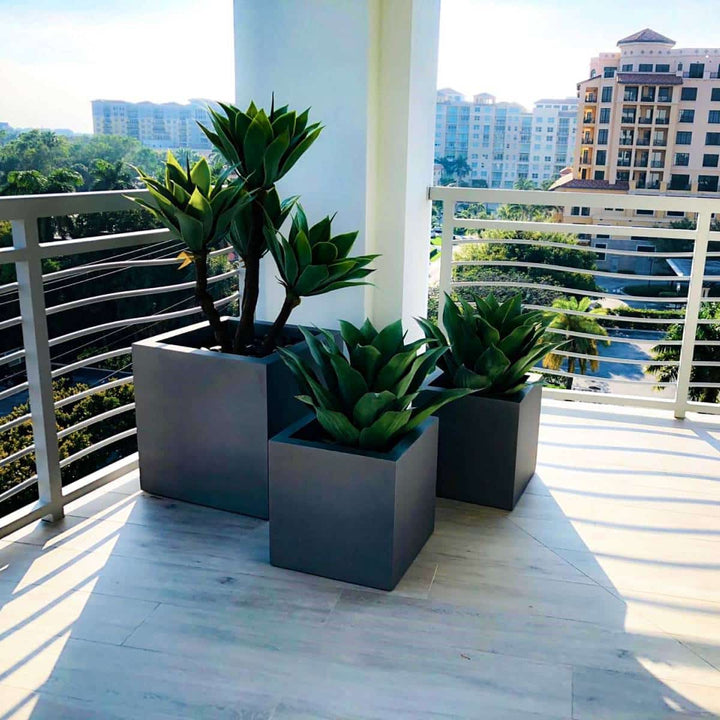 |
Montroy Cube Planter This elegant cube planter is perfect for adding a modern touch to any space. Made from durable fiberglass, it is available in 20 colors and is designed for indoor and outdoor use. View Product |
 |
Lima Square Tapered Planter The Lima planter combines clean lines with a tapered shape, ideal for various plants. It’s crafted from high-quality fiberglass, offering a sophisticated look for any decor. View Product |
Disadvantages
- Limited plant options: The first issue with gravel gardening has to do with the fact that plant choice in such landscapes is somewhat limited. Some plants aren't able to thrive in the conditions of a gravel garden as they need to withstand the outdoors, well-draining 'soil', and be drought tolerant. In a way though, this can be considered an advantage for more novice gardeners. This is because when your planting options are limited, gardening becomes that much simpler.
- Heat retention: Tying into the previous issue, gravel is naturally able to absorb heat and radiate it back into the surrounding area, making it difficult for some plants to thrive. This can also result in a gravel patio or gravel path becoming too hot in the summertime. One simply way to combat this is to use planters like fiberglass for your potted plants in the area, as fiberglass is extremely heat resistant.
- Weeds: Gravel gardens can be prone to weeds, which can be difficult to remove when they can become entangled in the gravel. However, this can easily be avoided by creating a border around your gravel garden, a step that many consider crucial to building the proper gravel garden center.
- Expensive: Gravel can be an expensive material to use, especially if you want to cover a large area. It can also require regular topping up over time, which can add to the cost. If you're going to go down the gravel path, it's essential you understand all the aforementioned issues before starting.
If the square isn't your style, what about these Round Planter Ideas for your flower pots?
 |
Globe Planter Our Globe Fiberglass Planter showcases a basic spherical shape, only with a modern twist. The full globe shape is the quintessential mix of traditional and contemporary styles as the round planters easily compliment any space around the home, garden or office. View Product |
 |
Spiral Modern Globe Planter You can now stop endlessly searching for the perfect decorative pots to place on your porch, patio, deck or stoop. Our Spiral Modern Planter has exactly what it takes to show off your exuberant personality and your passion for gardening while also being able to hold up when used either indoors or outdoors. View Product |
What's The Best Gravel To Use?
Although you now know a few advantages and disadvantages of gravel gardens, you might still be wondering what gravel to actually use for your garden--Let's find out!
The Classic Pea Gravel
Pea gravel is a small, round, and smooth type of gravel that is perfect for use in your garden. Not only is it aesthetically pleasing due to its neutral color which can fit into any design scheme, it's also permeable. This means water can pass through it easily, allowing for maximum drainage and preventing diseases like root rot. Lastly, pea gravel is low maintenance so once you have your garden set up, you can pretty much leave it as it is--Say goodbye to spending money on replacements!
Ultimately, whether you use pea gravel or some other type, so long as the gravel is small and cleaned of any debris, you're good to go.
Interesting in playing with plant combinations? Find out how with these 7 Plant Combination Ideas
Best Plants For A Gravel Garden?
Above and beyond, what matters most when trying to grow plants in a gravel garden is to remember that these are areas with excellent drainage and drought-tolerant characteristics, so the plants must be able to survive in such conditions.
Ornamental grasses, Mediterranean plants, shrubs, and some flowers are known for their ability to thrive in the aforementioned scenarios.
As a pro tip, choosing plants with deep root systems will make maintenance that much easier, as they're able to pull moisture from different levels.
Understanding this, here are a few species you could opt for.
- Euphorbias
- Lavender
- Prairie Dropseed
- Black Eyed Susan
These 9 Container Gardening Trends will take your potted plants to the next level
4 Great Gravel Garden Ideas
1. Pea Gravel Everywhere!
The first idea we have is sort of three-tips-in-one. Centering around the use of pea gravel, the three ideas are the use of a garden bench on pea gravel, a garden shed on pea gravel, or potted plants on pea gravel.
We'll start with a garden bench. Really, the aim of this idea is to create a sense of homeliness to a garden, making it somewhere to relax in as opposed to a spot with a nice view. As such, you're going to need more space for this, so a small garden wouldn't work so well. If you have the space, simply add a bench--wooden or other material--alongside the gravel path. There you have it, a seating area to enjoy the view.
A garden shed on the other hand is much more for functionality. This could be the perfect way to store tools or other bits and bobs that don't fit in your house. Alternatively, it could work as ground cover.
Finally, potted plants on pea gravel allow you to really start introducing extra visual interest to a space. What you pot and where you pot it is up to you, but this tip allows you to have a nice separation between plants growing out of the gravel and ones that aren't.
More on planters? Read all about Container Garden Planters here!
2. The Zen Garden
Creating a Zen garden out of gravel and fiberglass planters is a simple and affordable way to add a calming and peaceful atmosphere to any outdoor space.
To start, choose a location that is flat and level, and then start making borders around the gravel to prevent weeds from growing through. Next, fill the area with a layer of pea gravel or other small, smooth pebbles.
From there, you can start potting. Fiberglass planters like the Brisbane Tall Corner Planter are great because they can serve as the focal point of the garden or as background tools to let your plants shine. Either arrange the planters in a geometric design or opt for a more natural style if you really want to tap into that Zen aspect. Taking it a step further, use a rake or other garden tool to create patterns or swirls in the gravel and there you have it, your very own Zen garden.
3. Gravel Paths Around A House
Gravel paths are a cost-effective and low-maintenance option for creating walkways that blend seamlessly into flower beds or lawn areas.
If you decide to have these paths around a house, it's important to consider their location, width, and shape to ensure they complement the architecture of the house rather than take away from it.
Gravel paths can also be used to create garden rooms. These are where different outdoor living spaces are differentiated with the use of plants, hedges, or trellises.
In addition, the edges of the paths can be used to house a variety of plants or decorative elements, such as a rock garden, a water feature, or a series of potted plants.
What about trees? Check out these 10 Small Trees For Pots!
4. A Gravel Pathway Between Raised Beds & Planters
Taking the previous tip a step further, a gravel pathway between raised beds is a practical and visually appealing addition to any garden. Gravel is durable, cost-effective, and provides good drainage, making it the perfect choice for pathways.
On the other hand, raised beds offer several advantages, including improved soil quality, easier access for planting and harvesting, and better weed control. By combining raised beds with a gravel pathway, gardeners can create a functional and aesthetically pleasing layout.
For actual planting, low-growing ground covers or perennials along the edges of the pathway can soften the transition between the beds and the pathway, while adding color and texture. Then you can be more bold with ornamental grasses to give a space that much-needed zest. Happy planting!
JBD Concepts Offer You Or Your Customers The Best Planter Solutions Available
All of our planters come with an industry-leading warranty for both residential and commercial use giving you peace of mind that your investment is safe, and the form, function, and beauty of your new planter will last beyond expectations.
Are you a landscape architect or designer and want to get more customers with our planters? Contact us today to learn more about the exciting opportunities our wholesale range can deliver!
All our planters are available for retail customers too. Simply visit our store, select your planters, size, and finish and enjoy incredible value at affordable prices!
Shop now and redefine your indoor and outdoor space with our modern, durable, lightweight, and stylish fiberglass planters!


